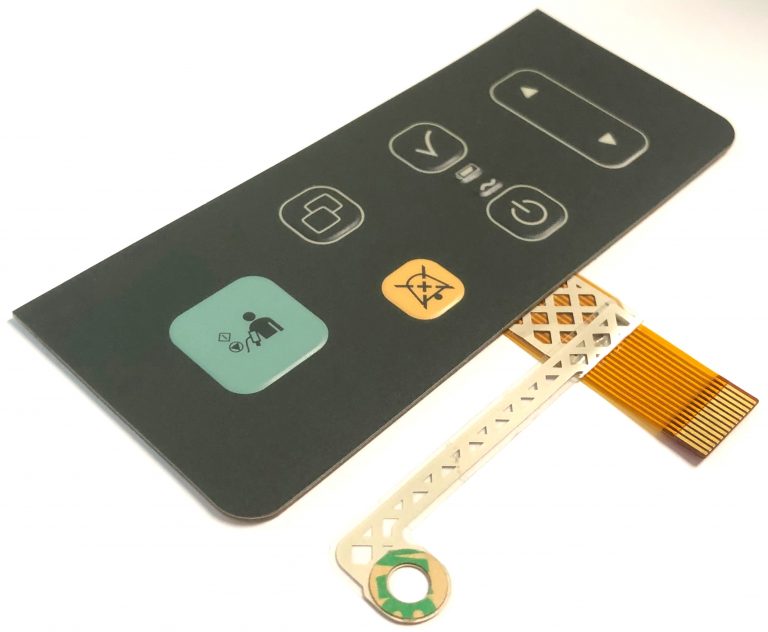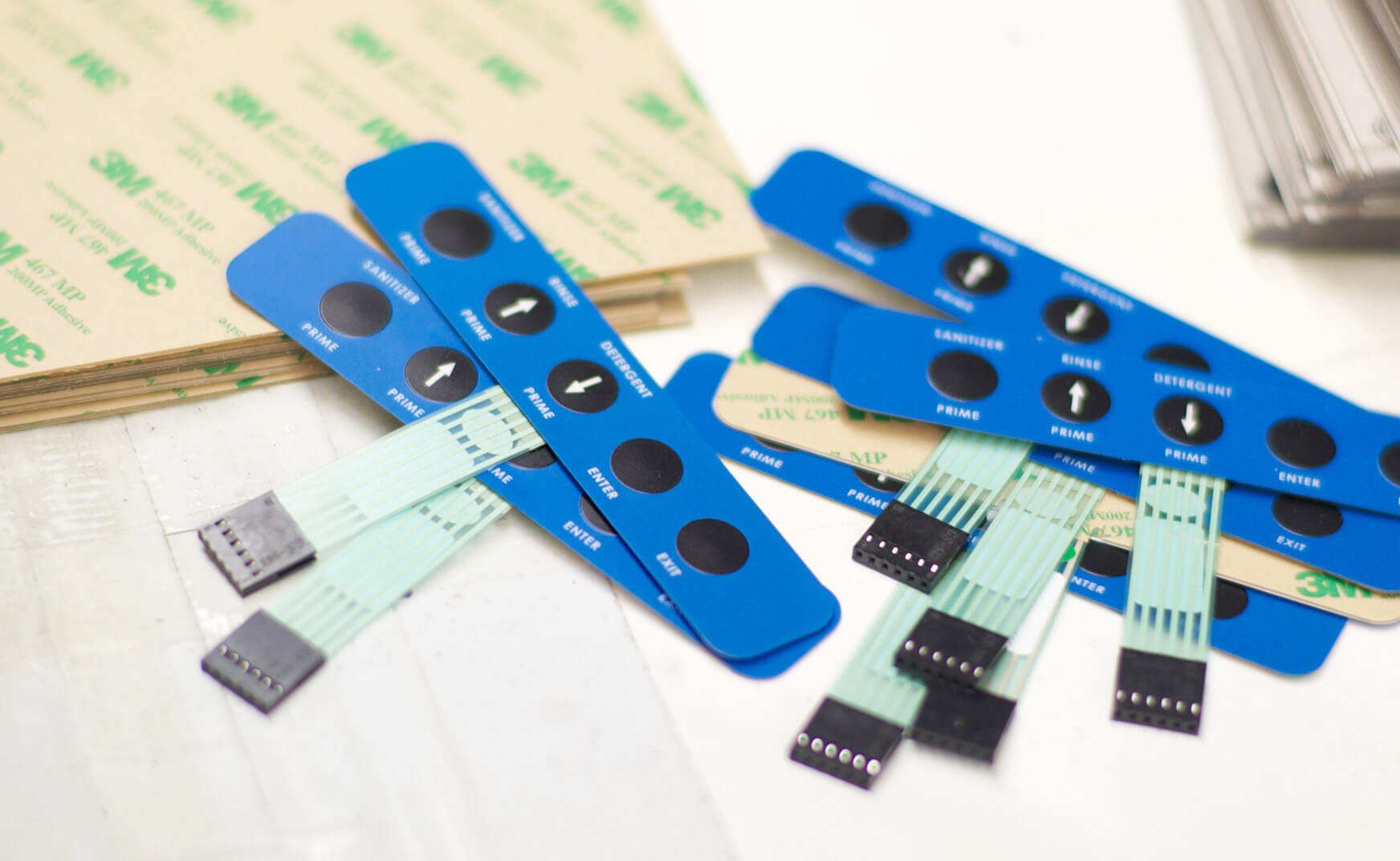Projects requiring high standards should always involve a experienced membrane switch manufacturer from the start.
Everything About Membrane Change: Recognizing Its Design and Performance
When you consider the control user interfaces in contemporary tools, membrane layer switches typically come to mind. These parts are much more than just switches; they blend layout and capability flawlessly. Recognizing exactly how they function and what makes them efficient can alter your viewpoint on day-to-day electronic devices. There are subtleties to their layout and efficiency that you could not be conscious of. Allow's discover what collections membrane layer switches over in addition to other control systems.
What Are Membrane Buttons?

Membrane buttons can likewise be tailored relating to form, dimension, and graphics, permitting makers to create unique interfaces tailored to details products. Overall, membrane switches play a substantial role in enhancing user experience across a wide selection of applications.
Just How Membrane Layer Switches Work
When you press a secret on a membrane switch, it activates a simple yet efficient system. The top layer, often constructed from adaptable material, presses down onto a conductive layer beneath it. This activity bridges the void between conductive traces, finishing an electrical circuit. As quickly as the circuit closes, it sends out a signal to the gadget's controller, which translates your input.
You'll observe that the tactile comments varies based on the button layout, providing either a soft click or an extra noticable feedback. When you launch the secret, the membrane layer go back to its initial position, resuming the circuit and quiting the signal. This process occurs virtually instantaneously, ensuring a responsive customer experience.
Membrane layer switches are prominent as a result of their durability and resistance to dirt and dampness, making them perfect for numerous applications, from home devices to clinical devices. Comprehending this procedure aids you value their widespread usage.
Secret Parts of Membrane Layer Switches
Comprehending the vital elements of membrane switches is essential for realizing their performance and design. The safety layer shields versus ecological aspects and put on, expanding the switch's life-span. By recognizing these parts, you'll acquire insight right into just how membrane layer changes operate and their relevance in various applications.
Products Utilized in Membrane Layer Switch Layout
The efficiency and durability of membrane layer switches greatly rely on the materials made use of in their style. You generally encounter polyester and polycarbonate as primary substrates as a result of their superb strength and adaptability. These materials resist scratches and chemicals, making them perfect for demanding environments.
The conductive layers often make use of silver or carbon, picked for their integrity and conductivity. membrane switch manufacturer. Silver offers superior performance, while carbon is a cost-effective alternative. For the overlay, you may take into consideration a matte or shiny coating, depending upon your aesthetic demands and customer experience
Make specific to choose adhesives that stand up to environmental variables like temperature level and humidity. Choosing the appropriate materials will assure your membrane layer switch stands the test of time.
Layout Considerations for Membrane Buttons
While developing membrane layer buttons, it's crucial to take right into account different aspects that influence their functionality and individual experience. Beginning by concentrating on the layout and button size; make particular they're instinctive and simple to browse. Think about the tactile responses you intend to provide-- will individuals require a recognizable click or a softer touch? Furthermore, assume regarding the products you'll utilize, as they'll affect resilience and appearances.
Do not overlook the graphic style; clear labeling and color comparison are substantial for visibility. Confirm your design fits ecological factors, like moisture or temperature variants, which might influence performance. Remember the value of testing prototypes with actual users to gather feedback and make necessary modifications. This repetitive process helps you fine-tune the layout, confirming it meets both functional and visual demands properly. By carefully taking into consideration these components, you'll develop a membrane layer switch that improves usability and have a peek here complete satisfaction.
Applications of Membrane Switches
Membrane switches are versatile parts located in various applications, from commercial tools to consumer electronics. You'll see their influence in makers that need long lasting interfaces and in gadgets that take advantage of smooth designs. Recognizing these applications helps you value the performance and usefulness of membrane switches in everyday technology.
Industrial Tools Use
When you're seeking to enhance the capability of commercial devices, membrane buttons offer a trusted solution that incorporates longevity with straightforward layout. These switches are excellent for extreme atmospheres, supplying resistance to dust, wetness, and chemicals. You'll discover them in control panels for making machines, cooling and heating systems, and clinical tools, where accuracy and responsiveness are vital. Their low profile suggests they fit effortlessly right into various devices, conserving important area while preserving ease of use. see this here With adjustable graphics and backlighting alternatives, you can create an intuitive user interface for operators, improving efficiency and safety and security. And also, their lengthy life expectancy lowers maintenance expenses, making them a smart investment for your industrial applications. Accept membrane switches to simplify your operations and improve total performance.
Consumer Electronic Devices Combination
In the domain of consumer electronics, membrane layer buttons play a vital role in enhancing individual communication and gadget functionality. You'll find them in gadgets like microwaves, remote controls, and pc gaming consoles, offering a seamless way to connect with technology. Their sleek style permits easy combination right into different items, making controls user-friendly and easy to use. With their capability to include graphics and backlighting, you can appreciate a modern-day aesthetic that complements the tool's overall look. Membrane layer buttons also assure toughness and resistance to dirt and dampness, extending the lifespan of your electronics. By picking membrane buttons, you enhance not simply the capability but also the design of your devices, making daily communications smooth and delightful.
Advantages and Downsides of Membrane Switches
While membrane buttons provide a range of advantages, they additionally come with some disadvantages that you ought to think about. One considerable benefit is their compact layout, making them ideal for space-constrained her latest blog applications. They're also cost-effective, offering a resilient option with a low production expense. Additionally, their smooth surface is very easy to clean, boosting hygiene in environments like medical facilities.

Nevertheless, there are drawbacks. Membrane switches can have a much shorter life expectancy contrasted to mechanical buttons, specifically under hefty usage. They can additionally be much less responsive, which could impact customer comments during procedure. If damaged, repairing them can be tough and often needs total substitute. Inevitably, their level of sensitivity to extreme temperatures and ecological conditions may restrict their efficiency in certain setups. Balancing these benefits and drawbacks will assist you determine if membrane layer switches are the appropriate suitable for your job.
Frequently Asked Questions
How Much Time Do Membrane Layer Switches Normally Last?
Membrane changes generally last in between 5 to one decade, depending on usage and ecological problems. You'll intend to review variables like wear, direct exposure to wetness, and temperature changes to determine their durability efficiently.
Can Membrane Layer Switches Be Customized for Details Layouts?
Yes, you can tailor membrane buttons to fit specific layouts (membrane switch manufacturer). You'll have the liberty to pick shades, forms, and formats that match your job's needs, guaranteeing they blend seamlessly with your total visual
What Is the Price Range for Membrane Switch Over Production?
The expense array for membrane button production commonly falls between $1 and $10 each, depending on factors like layout intricacy, quantity, and materials. You can get quotes from producers to discover the most effective option.

Are Membrane Layer Switches Waterproof or Resistant?
Membrane layer switches can be made to be water-proof or immune, relying on materials utilized and building techniques. If you require them for damp environments, ensure you define those needs during the layout procedure.
How Do Membrane Layer Switches Contrast to Conventional Buttons?
Membrane layer switches are usually thinner and extra adaptable than conventional switches, using a smooth layout. They're commonly simpler to clean and integrate, yet could not provide the tactile comments you're made use of to with mechanical choices.
Verdict
